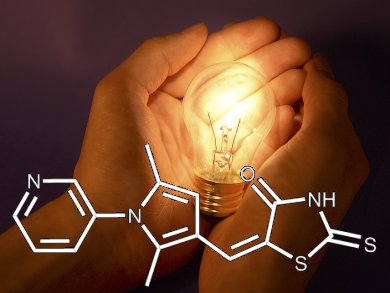Sensory neurons are nerve cells that convert external stimuli, such as chemical, mechanical or thermal pain, into electrical signals subsequently transmitted to the brain. These neurons sense pain via transient receptor potential channels A1 (TrpA1), ion channels located on the membrane of the neuron.
David Kokel, Harvard Medical School, Boston, USA, and colleagues discovered optavin (pictured), a small molecule which acts as a TrpA1 ligand and renders sensory neurons responsive to light. This molecule contains a photosensitive rhodamine moiety and, upon exposure to light, it forms reversible covalent bonds with cysteines residues present on TrpA1 channels, thereby inducing their activation. The discovery of optavin may, therefore, open the way to novel strategies to regulate the activity of pain transmitting neurons.
- Photochemical activation of TRPA1 channels in neurons and animals,
D. Kokel, C. Y. J. Cheung, R. Mills, J. Coutinho-Budd, L. Huang, V. Setola, J. Sprague, S. Jin, Y. NJin, X. Huang, G. Bruni, C. J. Woolf, B. L Roth, M. R. Hamblin, M. J. Zylka, D. J. Milan, R. T. Peterson,
Nat. Chem. Biol. 2013, 9 (4), 257–263.
DOI: 10.1038/nchembio.1183




